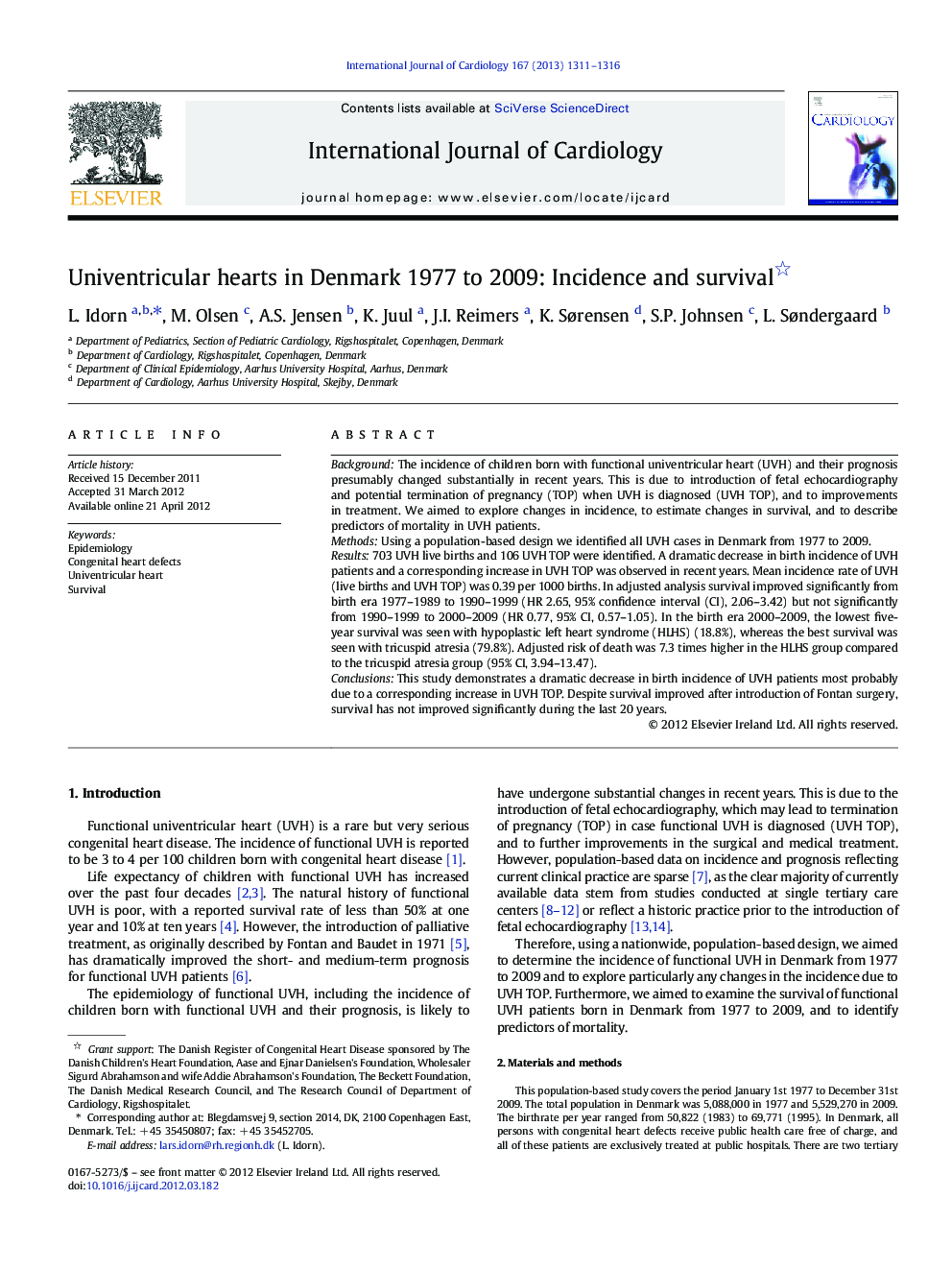| Article ID | Journal | Published Year | Pages | File Type |
|---|---|---|---|---|
| 5975509 | International Journal of Cardiology | 2013 | 6 Pages |
BackgroundThe incidence of children born with functional univentricular heart (UVH) and their prognosis presumably changed substantially in recent years. This is due to introduction of fetal echocardiography and potential termination of pregnancy (TOP) when UVH is diagnosed (UVH TOP), and to improvements in treatment. We aimed to explore changes in incidence, to estimate changes in survival, and to describe predictors of mortality in UVH patients.MethodsUsing a population-based design we identified all UVH cases in Denmark from 1977 to 2009.Results703 UVH live births and 106 UVH TOP were identified. A dramatic decrease in birth incidence of UVH patients and a corresponding increase in UVH TOP was observed in recent years. Mean incidence rate of UVH (live births and UVH TOP) was 0.39 per 1000 births. In adjusted analysis survival improved significantly from birth era 1977-1989 to 1990-1999 (HR 2.65, 95% confidence interval (CI), 2.06-3.42) but not significantly from 1990-1999 to 2000-2009 (HR 0.77, 95% CI, 0.57-1.05). In the birth era 2000-2009, the lowest five-year survival was seen with hypoplastic left heart syndrome (HLHS) (18.8%), whereas the best survival was seen with tricuspid atresia (79.8%). Adjusted risk of death was 7.3 times higher in the HLHS group compared to the tricuspid atresia group (95% CI, 3.94-13.47).ConclusionsThis study demonstrates a dramatic decrease in birth incidence of UVH patients most probably due to a corresponding increase in UVH TOP. Despite survival improved after introduction of Fontan surgery, survival has not improved significantly during the last 20Â years.
